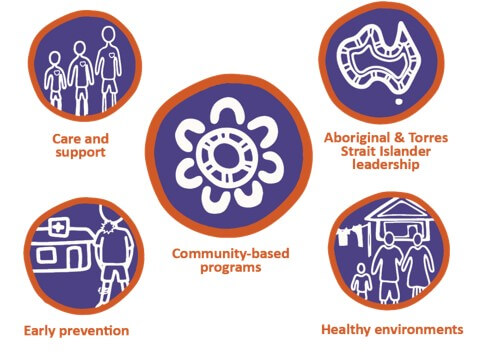Rheumatic heart disease (RHD) is preventable.
The collective experience of communities, clinicians, Aboriginal Community Controlled Health Organisations, government and non-government organisations, in addition to over 25 years of research, means the knowledge and evidence base now exists to eliminate rheumatic heart disease in Australia.
The Endgame Strategy brings together this experience, knowledge and evidence for the first time, presenting an opportunity for Australia to implement a comprehensive, long-term strategy to end RHD.
RHD disproportionately affects Aboriginal and Torres Strait Islander people. Currently, around 420 Aboriginal and Torres Strait Islander people have a diagnosed episode of acute rheumatic fever (ARF) each year, a rate 123 times higher than rates in non-Indigenous people. Of the more than 5,000 people living with RHD in Australia, 71% are Aboriginal and Torres Strait Islander people. This represents one of the highest per capita burdens of RHD in the world.
Without action, it is estimated that a further 8,667 Aboriginal and Torres Strait Islander people will develop ARF or RHD by 2031. Of these people, 1,370 will have severe RHD and 663 will die, with $273.4 million required to be spent on medical care. Aboriginal and Torres Strait Islander children are most at risk of developing the disease.
Ending RHD will not just eliminate the disease for the next generation of Aboriginal and Torres Strait Islander children – it will help to close the gap caused by other diseases of inequity.
Eliminating RHD means preventing new cases of disease. The Endgame Strategy outlines the best existing evidence-based strategies to prevent new cases of RHD in Australia, in line with the biomedical model of disease:
- Structural and system considerations: Central to any disease-specific strategy is a well-resourced, culturally secure primary healthcare system. Local partnerships to support communities also require links to housing, education, meaningful employment and environmental health services.
- Environmental, social and economic determinants: Action must be taken to address the environmental and socio-economic causes of Strep A infections leading to ARF and RHD, with investment in collaborative, community-led solutions.
- Primary prevention: Strategies which improve the assessment and treatment of skin and throat infections will prevent ARF in people at high risk of the disease.
- Secondary prevention: In order to prevent progression of ARF to RHD, strategies are needed to improve the early and accurate diagnosis of ARF and delivery of secondary prophylaxis.
- Tertiary care: Australia has a moral imperative to provide high-quality medical and surgical management for people with existing RHD, preventing complications and improving quality of life


